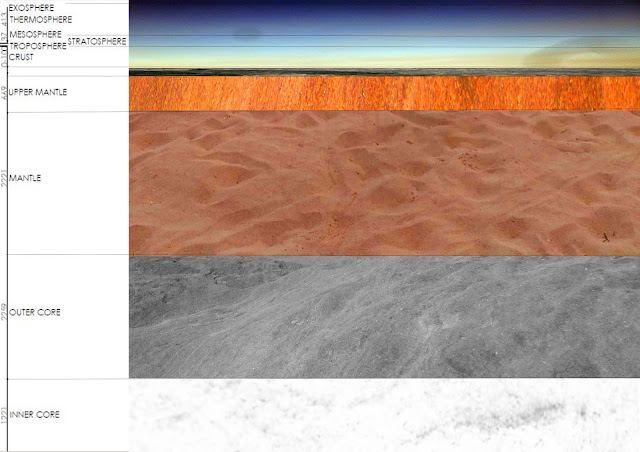UA9: NEW CITY
Jaechan KO, Jesús Escamezrico, Catherine Bookham, Elia Montagud
THE NEW CITY
The City of the Future
1st scale
Scientists expect sea levels to rise up to 60 meters when all glaciers melt. The current section of Dubai like this, but this will be what Dubai looks like, up 60 meters. The dry desert will just be the bottom of the new ocean. However, Dubai has been being a radical city, Dubai will have a place to live than in other cities because there are many buildings over 60 meters.
Nevertheless, we will have to live. To continue to create radical city, we also need modern elements. Buildings between with low height differences can be connected with new roads. That floated road can give us to radical experiences. And some buildings with similar building height differences can be places for sports activities.
As well as studying the effects of sea level rise and living above the waves, there is another radical option: living undergound. To live underground requires a study of geology. By drawing to scale the Earth´s layers it can also be seen that the habitable crust which we occupy is very thin, only 0-100Km thick. This then inspired the idea of living in the air, which occupies a much larger region encapsulating the earth. Of course, both come with associated problems. With altitude comes a lack of breathable air and cold. Undergound, problems of pressure and heat arise.
2nd scale
With floating cities on water, living in the air is rendered more obsolete. The alternative of living undergound is increasingly becoming reality, however to build undergound one must first understand its structure.
The scale drawing of Dubai´s geology below highlights the various rock layers and more interestingly, the natural resevoirs of gas and oil which have been exploited and hence led to Dubai´s existence. This a important relationship which is currently active. What will happen to the oil and gas supplies in the future and how will this affect the geological structure? The oil and gas also pose a technical opportunity as it limits how far down structures can progress.
Secondly, as one excavates deeper into the earth they progress through earlier ages. In our quest to advance we reveal history, and consequently over time the ruins make new history.
The architecture must embrace the cycle of birth and decay.  g
g
 g
g
Idea about anthill to create the different hols in the cave
How people feel different spaces inside to a cave.







Hi, I love the idea and the way you represent it. Even if you have to (obviously) follow your tutor's instructions I'd recommend you to stick to consistent documents. In your case, I might take some of your references and target one of them: is it a FLOODED DUBAI? (best option for me!) or a way of recycling some of the biggest DUBAI SKYSCRAPERS?, Is it about creating some corridors UNDERGROUND THAT ARE FLOODED?. Looks great but I'd try to use the tools of the architect (software, research...) to address some REALITY (or FAKE REALITY). Great Job!!!
ResponderEliminarThank you. Our project at the moment is all of them. The flooding of Dubai is directly related with the reuse of old buildings and the movement of people underground. Due to the soil structure parts of the sublayer will be flooded but there will be areas which are habitable. For example, the old oil resevoirs could be repurposed.
Eliminar